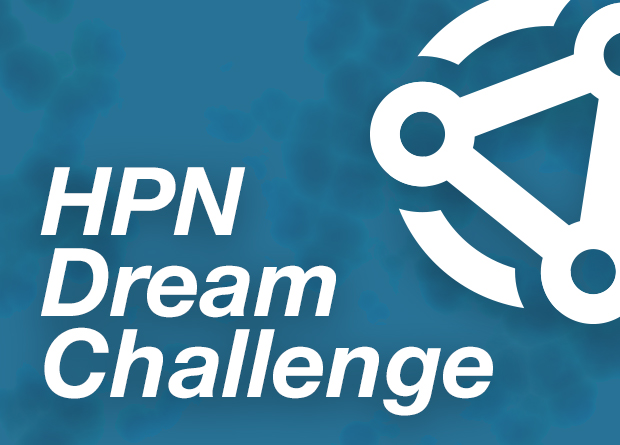
DREAM shadows: chasing down disease networks
A community effort to assess the performance of computational methods for ‘learning’ the structure of molecular networks shows that solutions may be within reach.

A community effort to assess the feasibility of using computational methods to piece together biological networks has shown that solutions to this puzzle may be within reach. The international study, presenting findings from a Heritage Provider Network (HPN)-supported DREAM challenge, is published in the journal Nature Methods. The project was coordinated by EMBL-EBI, the Medical Research Council Biostatistics Unit (MRC-BSU) and IBM.
The structure of molecular networks plays a vital role in determining how our cells behave. But in the ever-changing and endlessly complex cellular environment, they are a bit of a moving target. For computational biologists, there are challenges on every level: pinning down the interplay between proteins, piecing together ‘healthy’ networks and picking their way through the myriad changes that disease can cause. Knowing more about disease-related changes to molecular networks could help scientists to better understand the mechanisms underlying disease and potentially design improved molecular therapies.
It’s a bit like drawing a picture of an intricate object just by looking at its shadow on the wall.
“If we could use data from new and emerging technologies to efficiently reconstruct molecular networks – even roughly – that would be transformative for disease biology,” says Sach Mukherjee of the German Centre for Neurodegenerative Diseases (DZNE), formerly Programme Leader at the Medical Research Council Biostatistics Unit (MRC-BSU). “But it is extremely difficult to develop computational methods that can learn complex biological networks, which are made up of countless cause-and-effect relationships. People all over the world are working on this problem in many different ways, and this challenge brought the community together to assess where we are with computational network modelling.”
“You can’t actually see a biological network – you can only observe these millions of molecular interactions indirectly, by looking at what happens to the molecules under different conditions. That is a significant problem in biology,” explains Julio Saez-Rodriguez of RWTH Aachen and visiting group leader at the European Bioinformatics Institute (EMBL-EBI). “It’s a bit like drawing a picture of an intricate object just by looking at its shadow on the wall. We’re looking at very dynamic data, about a lot of conditions in different kinds of cells. There can be many different models for the same biological network, each based on a different perspective.”
The Dialogue for Reverse Engineering Assessment and Methods (DREAM) project brings communities together over shared challenges in the life sciences to objectively assess performance of computational methods. In the HPN-DREAM challenge, an international team of scientists set up a signalling network puzzle based on new data from human cancer cell lines. They then invited modellers from around the world to try to solve it. Data was contributed pre-publication by groups at Oregon Health and Science University and the MD Anderson Cancer Center in the US.
More than 2000 networks were submitted by more than 70 participating teams. The organisers then looked at how well these networks agreed with what actually happened in experiments that the participants had not seen. The submissions included entirely new methods and novel adaptations of existing ones. Several teams performed significantly better than chance, as did ‘wisdom-of-crowds’ networks formed from putting together results from multiple teams.
“What we’ve seen is that even though these problems are extremely difficult, they can be solved,” says Gustavo Stolovitzky of IBM Translational Systems Biology and Nanobiotechnology and founder of the DREAM Challenges. “We encourage anyone creating a new approach to use the challenge data and scoring method to test drive their method.”
Keep the DREAM alive
The HPN-DREAM challenge resulted in a broad palette of computational methods being shared widely, and made available for further improvements. DREAM challenges support open, transparent science, and all challenge data, participant submissions and source code are available online through the Synapse platform supported by Sage Bionetworks. Anyone can benchmark against the HPN-DREAM data and participants via the dedicated DREAMTools package.
This post was originally published on EMBL-EBI News.


